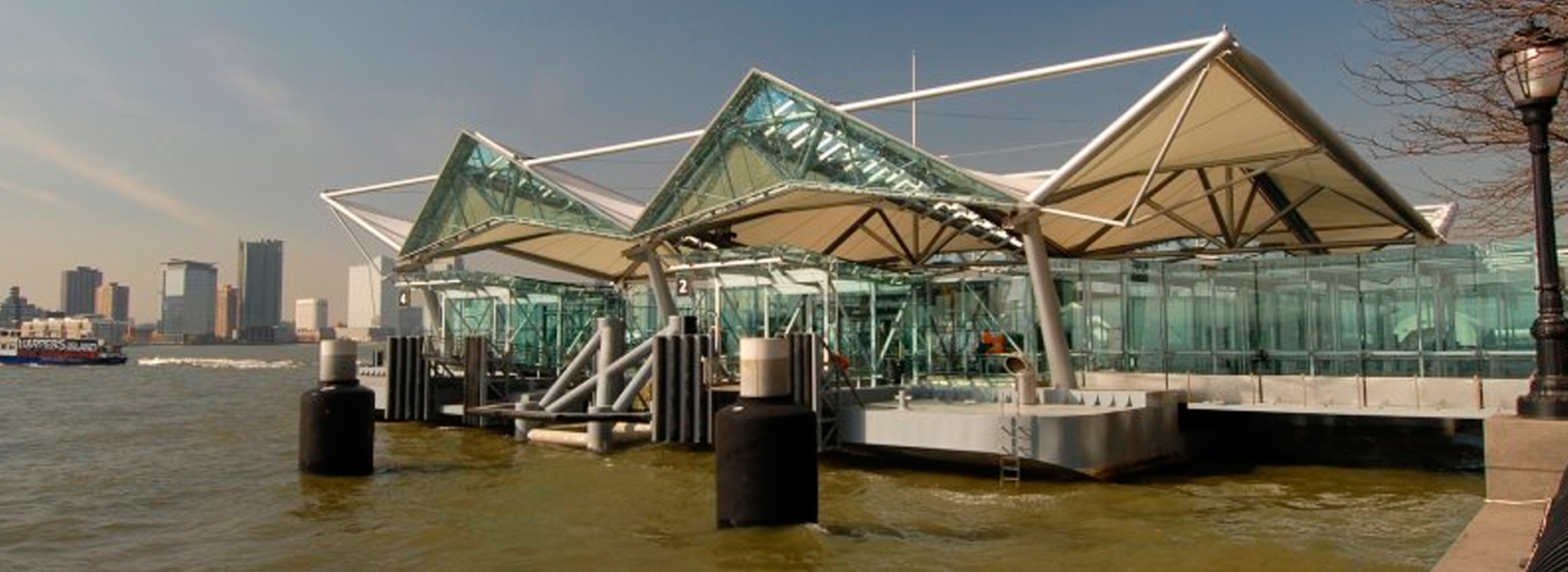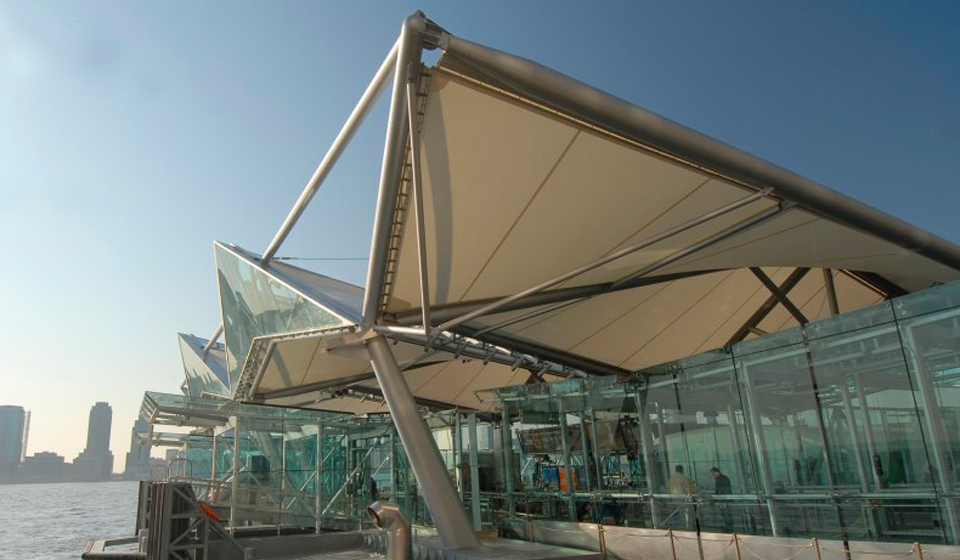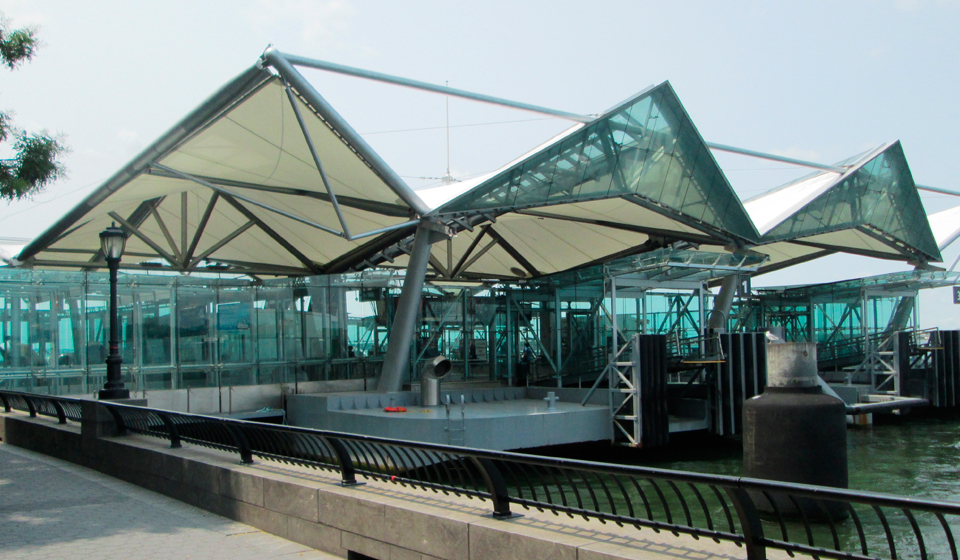

Battery Park City Ferry Terminal
The Battery Park City ferry terminal features a 24,000 square foot tensile roofing canopy constructed and installed by Birdair.
Fabric Type: PTFE Fiberglass
Market Sector: Transportation
Project Size: 24,500 sq.ft.
Architect: Port Authority of New York & New Jersey
Engineer: Severud Associates Consulting Engineers PC
Owner: Port Authority of New York & New Jersey
Completion Date: March 18, 2009
The Battery City Park Ferry Terminal located in New York City features a distinctive, PTFE tensile roof canopy constructed and installed by Birdair, Inc., the leading specialty contractor of lightweight long-span roofing systems and tensile structures throughout the world. It opened to the public on March 18, 2009. With 7,000 to 8,000 passengers traveling through the terminal daily, Birdair's design-build team worked to accomplish the permanent floating structure requiring a roofing material that was both durable and visually appealing. Approximately 24,440 square feet of PTFE-coated fiberglass membrane was used to design and build this canopy system.
Aesthetically, the sweeping design of the tensile architecture is suggestive of canvas sails, while functionally the fabric provides cover in all weather conditions for the terminal’s patrons. To preserve views from the Battery Park City esplanade and to complement the fabric roof design, glass windscreens were incorporated wherever feasible. “The Battery Park City ferry terminal’s sophisticated look is largely a result of its fabric membrane roof,” says Michele Roth, Birdair Business Development Manager. “Birdair’s ability to work with the project team from design through completion continues to result in aesthetic and functional tensioned membrane roofing solutions like this one.”
In addition to the new terminal and roof construction, updated amenities were added including gangway separations, restrooms, a concession kiosk and improved lighting. This new structure replaces a terminal constructed in 1989, which provided ferry service between Hoboken and Battery Park City. Designed to accommodate five ferryboats simultaneously, the terminal offers travelers ferry service to Jersey City, Weehawken, Hoboken and Liberty State Park in New Jersey, as well as offering water taxi service. It is the largest terminal of its kind in the US and was ranked the “Best Public Works Project for 2008” by New York Construction News.

